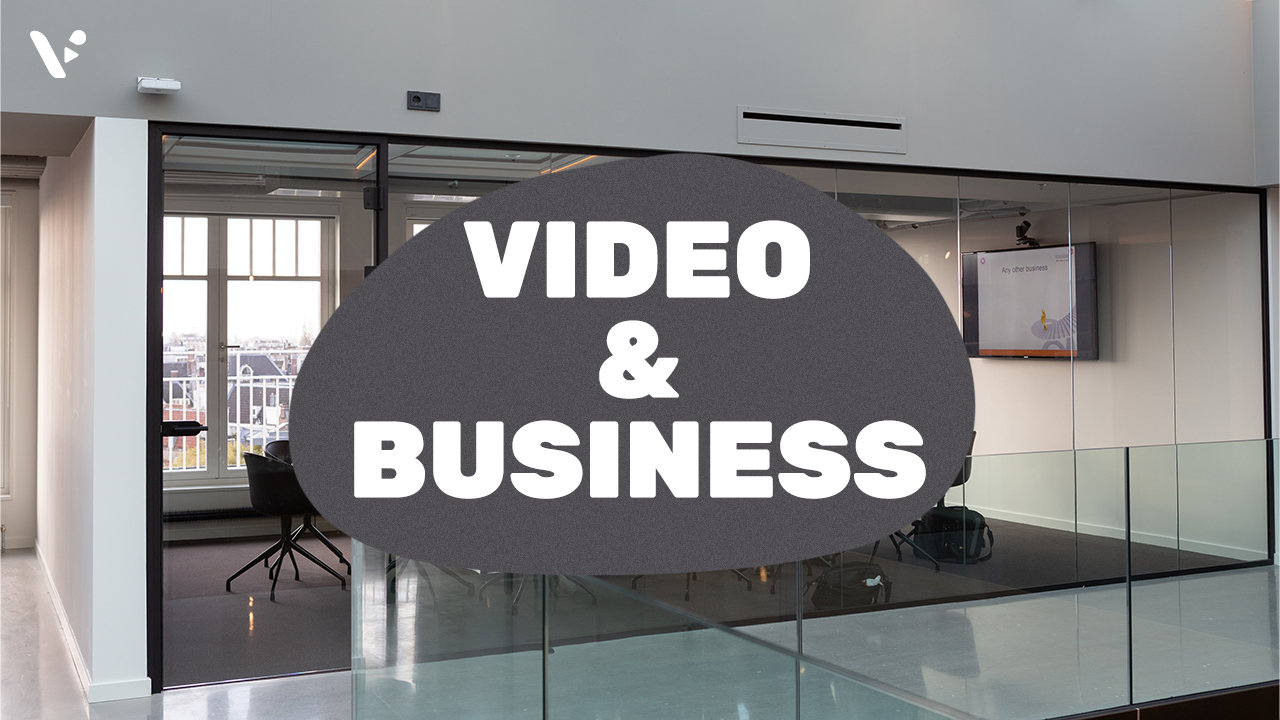In the business world of 2025, the phrase “a picture is worth a thousand words” takes on new meaning with video. Video for business transcends traditional communication barriers, offering a richer, more dynamic way to convey messages.

For businesses, video represents a convergence of art and strategy, where creativity meets commercial objectives. It’s a medium that encapsulates the essence of a brand, its values, and its vision, all while engaging with the audience in a way that text or static images cannot. In this digital age, where attention is fragmented and fleeting, video captures and holds viewer interest, delivering messages in a compact, impactful form.
Moreover, video for business isn’t just about external communication. It’s a tool for internal collaboration and learning, breaking down complex concepts into digestible content for employees. The role of video in training, team building, and internal communications underscores its versatility and effectiveness as a communication tool.
Video just works, no matter what your business is
In 2025, video for business is more important than ever. Video’s versatility and effectiveness make it an essential tool for any business looking to thrive. Whether it’s engaging potential customers or communicating complex ideas, video simply works.
The effectiveness of video spans across both B2C and B2B sectors, adapting to different audiences with remarkable agility. It’s not just about creating content; it’s about creating connections, conveying messages, and compelling action in ways other mediums can’t match.
Business to Consumer (B2C)
Short business videos have proven to be incredibly effective in engaging consumers. A significant 78% of people say they most prefer to learn about a product or service by watching a short video, underscoring the impact of concise, compelling content. This trend reflects a broader shift in consumer preferences towards bite-sized, yet informative video content. Short-form continues to drive ROI in 2025, and ideal lengths vary by platform: sub-15s on Instagram/X, 15–60s on TikTok, and 60s+ on YouTube.
Videos are not just watched; they’re enjoyed. A striking 83% of consumers want to see more videos from brands in 2025.. This enjoyment translates into deeper brand engagement, making videos a powerful tool for storytelling, building brand identity, and fostering a lasting connection with consumers.
Business to Business (B2B)
The B2B sector has also embraced video for business, with 89% of businesses use video as a marketing tool in 2025. Videos in B2B contexts are often used to explain complex products, showcase case studies, or as part of thought leadership content, proving their versatility and effectiveness in a business-to-business environment.
As always, LinkedIn is an invaluable platform for video distribution, used by 70% of video marketers, though Instagram isn’t far behind. 59% of those marketers report success on LinkedIn, while Instagram ranks as the most successful at 61%. As always, if you have the time, manpower, and resources, you should really try to be on as many channels as you can.
Video creation continues to change
The landscape of video creation is likely to undergo a further shift in 2025 and beyond. With technological advancements, especially in AI, the way videos are produced, edited, and distributed is evolving, offering new possibilities and efficiencies.
The impact of AI
AI is now embedded across the video lifecycle, but adoption is nuanced. Among video marketers, reported use of AI tools for creating/editing fell to 51% in 2025, showing teams are refining where AI truly adds value. This doesn’t mean that AI isn’t helpful, just that people are narrowing in on AI’s true use cases. On the advertising side, adoption is surging: 86% of digital-video buyers are using or plan to use GenAI to create video ads, and CTV/social remain ‘must-buy’ channels.

Some AI tools strive to streamline video production by automating tedious tasks. From AI-powered subtitling and transcription to scriptwriting and audio editing, these tools are becoming increasingly important in the video production process.
While current generative AI tools in video haven’t fully met user expectations, their potential is widely recognized. The industry is optimistic about the future capabilities of these tools, anticipating advancements that will further enhance the video creation process.
Visla is at the forefront of this change, seamlessly integrating AI into video creation and editing. This integration enables users to produce high-quality content more efficiently, making professional video production more accessible than ever.
Human creativity remains front and center
Despite AI’s growing role, human creativity remains irreplaceable. AI tools are augmenting the capabilities of video creators, not replacing them, enhancing the creative process rather than supplanting it.
AI is proving to be a boon for creativity in video production. By taking over repetitive and time-consuming tasks, AI allows creators to focus more on the creative aspects of video production, leading to more innovative and engaging content.
Looking forward to 2025 and beyond

As we’re most of the way through 2025 and continue to look ahead, it’s clear that video for business is not just a passing trend but a fundamental aspect of modern business strategy. The dynamic nature of video content and its ability to adapt to various platforms makes it an indispensable tool in the business arsenal.
The shift to video-centric communication and marketing requires businesses to stay ahead of the curve. This means not only embracing new technologies and trends but also understanding the evolving preferences of their audience. Businesses need to be agile, creative, and data-driven in their approach to video content. From integrating AI and analytics to fostering a culture of innovation, staying prepared for the future of video is key.
Video Checklist
To successfully pivot to video in 2025 and beyond, businesses can follow this checklist:
- Understand Your Audience: Tailor content to meet the specific needs and preferences of your target audience.
- Leverage AI Technologies: Utilize AI for efficient video editing, subtitling, and content optimization.
- Focus on Quality and Branding: Ensure videos meet high-quality standards and align with your brand identity.
- Use Social Media Platforms: Distribute where results are strongest in 2025: LinkedIn (widely used, strong B2B results) and Instagram (highest success rate), plus YouTube for long-form and Shorts for reach.
- Emphasize Mobile Optimization: 3.47B people will watch video on their phones in 2025, so optimize for vertical, sound-off captions, and fast hooks.
- Engage with Short-Form Content: Create concise, impactful videos to cater to busy consumers
- Encourage Viewer Interaction: Use interactive elements in videos to engage and retain the audience.
- Measure and Analyze Performance: Regularly track video performance and use analytics for continuous improvement.
- Stay Updated with Trends: Keep abreast of the latest trends and technologies in video production and marketing.
- Prioritize Short-Form ROI: Short-form video continues to deliver the highest ROI across channels in 2025, so tailor length by platform
FAQ
Yes, usage and impact keep growing. Younger viewers are now significantly more likely to watch with subtitles, and marketers added far more accessibility features (especially captions) to videos last year. Multiple studies show captions can lift view time and recall, and TikTok reports big gains in brand affinity when captions are present. Treat subtitles as both accessibility and growth levers, not just compliance.
Absolutely. WhatsApp is rolling out ads in the Updates tab and has 100M+ monthly users in the U.S., making short, utility-focused videos viable for discovery and conversion. Globally, WhatsApp’s business ecosystem keeps expanding, and ad placements open new paid routes beyond click-to-WhatsApp. In Japan, LINE’s massive reach makes it a primary channel for video + message flows, from promotions to service. Design creative for chat contexts: quick value, captions on, strong CTAs to chat or catalog.
Ship multiple renditions and let the player adapt quality automatically via HLS/DASH (adaptive bitrate streaming) instead of serving a single heavy MP4. This reduces buffering across varied devices and bandwidths and is the industry-standard approach for global delivery. As a practical guardrail, export social cuts at platform-native specs and keep web embeds within YouTube’s recommended bitrates (e.g., ~5 Mbps for 720p, ~8–12 Mbps for 1080p) to balance size and clarity.
Use engaged-view conversions (EVCs) to capture viewers who watch at least 10 seconds of a YouTube ad and convert within a short window—then connect Google Ads and GA4 so those events flow into your reporting. Pair EVCs with GA4’s data-driven attribution to see assisted impact across channels, not just last-click. Note that GA4 added 2025 updates improving attribution signals, so revisit your model settings and lookback windows. Track this alongside classic KPIs like watch time, view-through rate, and post-view site engagement for a fuller picture.

